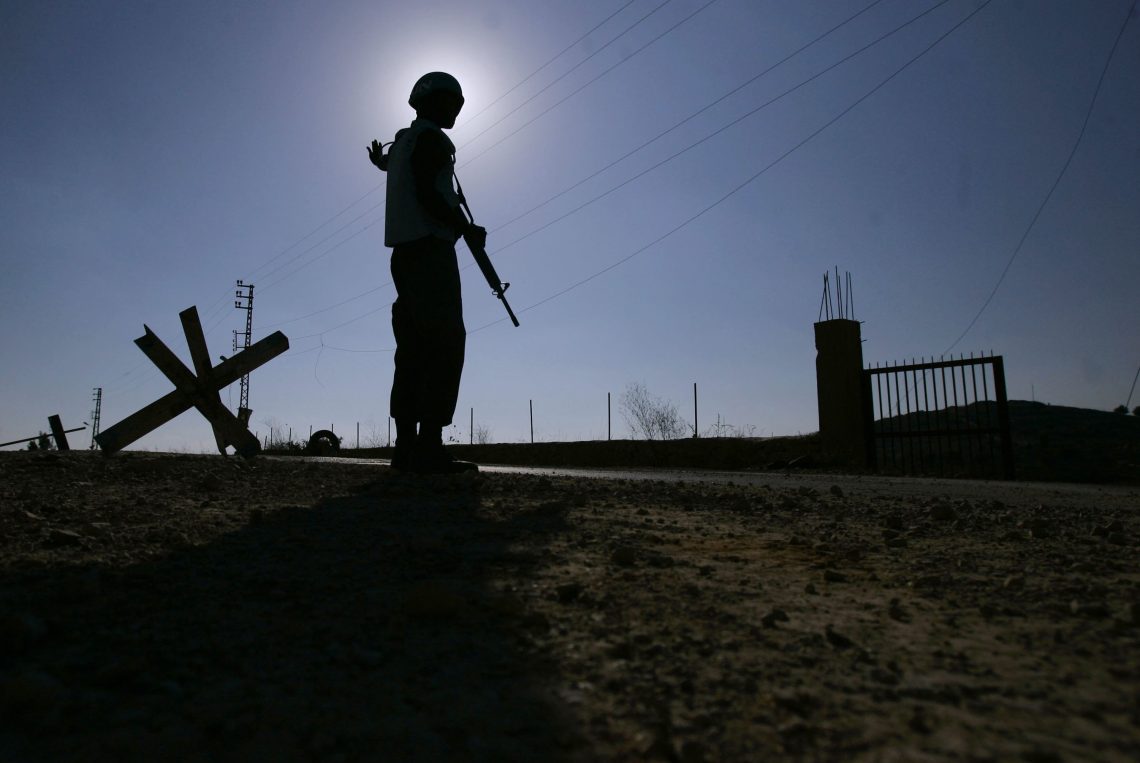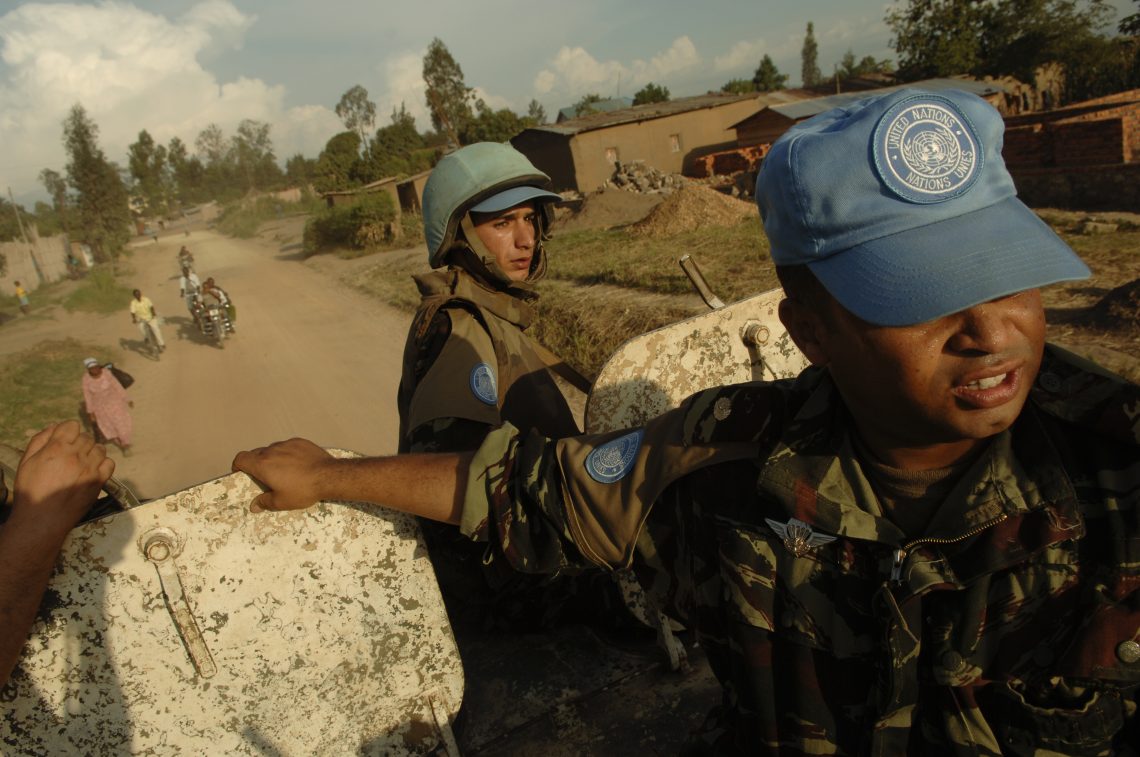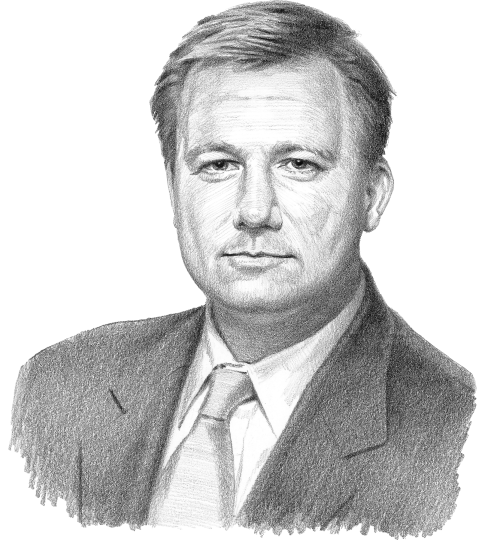Peacekeeping sunset
UN peacekeeping is in a process of retrenchment, driven largely by perceived ineffectiveness and great power divergent interests.

In a nutshell
- UN operations have often failed to contribute to conflict resolution
- There have been periods of peacekeeping expansion and retreat in the past
- The withdrawal of troops from Mali signals an ebb in UN peacekeeping
The United Nations Charter places the principal responsibility for maintaining international peace and security with the Security Council. To fulfill these responsibilities, the Council was given extensive powers to impose sanctions and authorize military force. However, this robust vision of the UN as a key vehicle for maintaining international peace and security often ran aground on the shoals of great power rivalries during the Cold War.
The most visible applications of this authority in the UN’s first several decades were UN peacekeeping operations. However, differing interests among the permanent members of the Security Council, particularly the United States and the Soviet Union, ensured that peacekeeping missions were rare. Since the end of the Cold War, peacekeeping has been more common, with more than 50 operations established.
Peacekeeping operations, however, ebbed and flowed both in the number and ambition of the operations. Modest operations in the early years were followed by operations of greater ambition and scope. Some missions were successful, others were not. Some missions seem in perpetual stasis, and some collapsed in tragedy either because of poor decisions or external circumstances. The current period of exuberance for UN peacekeeping that began in the mid-2000s is ending. What, if anything, will fill the gap?
Facts & figures
UN peacekeeping missions
There have been over 70 peacekeeping operations in 50 different countries and territories since the first operation was established in 1948. Over a million uniformed and civilian personnel have served in those operations. Nearly 4,300 people have been killed serving in these operations.
In the post-Cold War period, on average, there have been 15 active peacekeeping operations each year.
At the peak, there were 20 active peacekeeping operations during several years in the mid-to late-1990s. Over this period, on average, nearly 70,000 uniformed personnel were deployed each year.
A retrenchment period started in the late 1990s, but reversed in the 2000s when several large, ambitious operations were approved. At its maximum in 2015, over 106,000 uniformed personnel were deployed on 16 UN peacekeeping operations. Currently, there are 12 active peacekeeping operations: six in Africa, three in the Middle East, two in Europe, and one in Asia. These operations are staffed by over 75,000 uniformed personnel and over 13,000 civilian personnel. The current peacekeeping budget, which covers the period from July 1, 2023, to June 30, 2024, is $6.05 billion.
Peacekeeping’s modest start
The UN Security Council, which authorizes peacekeeping operations, was frequently paralyzed by great power disagreements in the first few decades of the organization. From 1945 to 1990, only 18 peacekeeping operations were authorized.
In this era, particularly in the early years, operations were generally modest in size and mandate – involving personnel voluntarily provided by the member states to fulfill limited missions, such as observing and reporting on cease-fires, with little expectation that they would be required to use force. These types of operations with limited mandates are relatively inexpensive and require relatively few personnel. The UN Truce Supervision Organization (UNTSO) established in 1948 and the UN Military Observer Group in India and Pakistan (UNMOGIP) established in 1949 were examples of this.
After a few years, the UN began edging into more risky operations. The first armed peacekeeping operation was deployed to address the Suez crisis (UNEF I) in the 1950s, followed a few years later with a large operation in the Republic of the Congo (ONUC) to ensure the withdrawal of Belgian forces and establish peace and stability. The Congo operation illustrated the risks of sending UN peacekeepers to impose peace. Although it only lasted four years, some 250 peacekeepers were killed, making it the fifth-most deadly operation in UN history. Then Secretary-General Dag Hammarskjold was killed in a plane crash while visiting the Congo during the operation.
Reluctance to repeat the risks assumed in Congo curtailed peacekeeping ambitions for several decades. Operations established in the later 1960s and 1970s in places like the Dominican Republic (DOMREP) and Yemen (UNYOM) were established to monitor and guard against breaches of peace agreements. While more robust than earlier operations like UNTSO and UNMOGIP, they were still deployed after a peace agreement to, in essence, prevent unintentional reignition of conflict and were of relatively short duration.
More by Brett Schaefer
The UN Human Rights Council is broken
What role should the G20 play?
Even though traditional peacekeeping operations were modest in mission, they tended to persevere. For instance, UNTSO and UNMOGIP, the two oldest UN peacekeeping operations, continue today. This illustrates a potential drawback – their presence can reduce incentives for parties to the dispute to negotiate a permanent resolution.
As noted by Professor Dennis Jett, the six oldest peacekeeping missions – the first two, along with operations in Cyprus (UNFICYP), the Golan (UNDOF), Lebanon (UNIFIL), and Western Sahara (MINURSO) – are traditional peacekeeping operations.
Together these disputes have been in existence for over three centuries, yet there is no prospect that any of them will soon be concluded. In fact, in only one of them is there any serious current attempt to resolve the border problem or even any real effort to normalize relations between the countries involved.
Post-Cold War peacekeeping enthusiasm
When the Cold War ended, the gridlock in the Security Council eased. As many operations were established in the early post-Cold War years as were established in the first 45 years of the UN. In 1989, for the first time there were 10 active UN peacekeeping operations around the world – double the average of the preceding decades. Since 1990, on average, there have been 15 active peacekeeping operations at any one time. Prior to 1992, the UN had never deployed more than 30,000 peacekeepers simultaneously. Since then, on average, over 65,000 uniformed personnel have been deployed to UN peacekeeping operations annually.
The nature of UN peacekeeping also shifted from traditional mandates, such as monitoring cease-fires, to more complex tasks, such as imposing peace in unstable environments, quelling wars within states, building institutions, promoting human rights, and disarming former combatants. This led to a dramatic increase in operations, peacekeepers and expenses.
In addition, the willingness to deploy operations into dangerous situations where there was no peace to keep led to situations where UN peacekeepers were overwhelmed, as in Somalia (UNOSOM II) in 1993, or were unable to protect the civilian population from violence, which led to genocide in Rwanda (UNOMUR) in 1994 and the Former Yugoslavia (UNPROFOR) in 1995. These failures and tragedies led the Security Council to pull back on the scope and size of operations, and assess what went wrong and make recommendations on how to avoid a repeat of those debacles, including more realistic mandates, understanding that UN peacekeepers were not war fighters, and improved planning.

However, unstable situations again led the Security Council to ramp up peacekeeping, establishing missions in the Central African Republic, the Democratic Republic of the Congo, Haiti, Mali, South Sudan, Sudan and other places. The number of operations again increased, averaging 15 active operations per year, and the number of uniformed personnel on UN peacekeeping operations surged. These complex operations led to a high of more than 106,000 uniformed personnel deployed to 16 operations in 2015.
The record of UN peacekeeping is mixed. There have been successful operations, such as Ivory Coast and Liberia. But there have also been many failures. In addition to Somalia, Rwanda and Yugoslavia mentioned above, South Sudan has been beset by violence despite robust UN peacekeeping operations in the country since before it became independent. Haiti remains a failed nation even after six peacekeeping operations deployed for nearly a quarter of a century mandated to restore stability, establish democratic governance, and promote human rights.
Peacekeeping in retreat
Since 2015, interest in UN peacekeeping has gone down. Currently, there are 12 active peacekeeping operations involving some 75,000 uniformed personnel. That number is expected to fall further, now that the Security Council has terminated the decade-long operation in Mali after the government called for the operation to end. Likewise, the UN peacekeeping operation in the Democratic Republic of the Congo, which in one form or another had been in place since the late 1990s, is also expected to wind down in 2024 at the behest of the government. These two missions are among the UN’s largest, involving over 27,000 uniformed personnel.
Both operations have been troubled for some time. The Mali operation experienced high casualties dealing with al Qaeda-affiliated insurgents and difficult relations with the Malian government, particularly after the military assumed control, that imposed escalating restrictions on its operations. Likewise, the DRC operation failed to protect civilians and quell ongoing violence from various armed groups resulting in anti-UN protests.
Scenarios
Is this downward trend short-term or a portent for long-term retrenchment? For the most part, the Security Council has been able to extend peacekeeping mandates despite rising geopolitical tensions among the permanent members in the wake of Russia’s invasion of Ukraine. Long-term operations like MINURSO, UNDOF, UNFICYP, UNMOGIP and UNTSO are likely to continue as they have for decades. Similarly, the mission in Kosovo has Russian support and recent tensions between Kosovo and Serbia make it unlikely that the other members of the Security Council will press to end it. But these operations – relatively small, uncontroversial, and inexpensive – are low-hanging fruit.
Cracks in Security Council collaboration are appearing. For instance, the Security Council recently failed to extend a humanitarian operation for Syria due to a Russian veto. In addition, Russian relations with African governments, including through the Wagner group, have complicated situations where UN peacekeeping missions are present and are believed to have contributed to the request by Mali to end MINUSMA.
UN peacekeeping operations in the Central African Republic (MINUSCA) and South Sudan (UNMISS) are also facing difficulties. Peacekeepers have been accused of failing to protect civilians in the Central African Republic and South Sudan and the operations have not prevented either country from deteriorating into chaos and violence. Echoes of anti-UN demonstrations in the Democratic Republic of the Congo, perhaps egged on by the Wagner group in the case of the Central African Republic where that group is enmeshed, might lead to similar calls by those governments for the operations to end.
Meanwhile, UNIFIL has all but abandoned its mandate to establish “an area free of any armed personnel, assets and weapons other than those of the Government of Lebanon and of UNIFIL” between the Blue Line and the Litani River. Well-armed Hezbollah forces largely operate freely in Lebanon and renewed conflict with Israel seems increasingly likely. If things deteriorate, it would not be surprising to hear Israel or the U.S. call for that operation to be downsized or terminated in the upcoming years, especially if its mandate cannot be enhanced to address current security concerns due to opposition from Russia, China, or other members of the Security Council.
There also seems to be little appetite for approving new UN operations despite conflict and unstable situations in Ethiopia, Sudan, Haiti and other places that might have led the Security Council to establish an operation in past years.
However, alternative interventions might fill the gap. For instance, the U.S. has been pressing Kenya to lead a non-UN multinational force to help stabilize Haiti. This summer, the Security Council discussed options for endorsing and supporting African Union peacekeeping missions through the UN. However, leaving aside the political dynamics of approving such operations, getting agreement on distributing the cost and establishing oversight mechanisms for training, discipline, and other issues will prove challenging.
For now, it seems likely that UN peacekeeping will moderate, perhaps retreating to levels not seen since the Cold War, relegated to overseeing long-standing operations that persist at low risk and little controversy, but do little to resolve the conflicts they were established to help settle.









